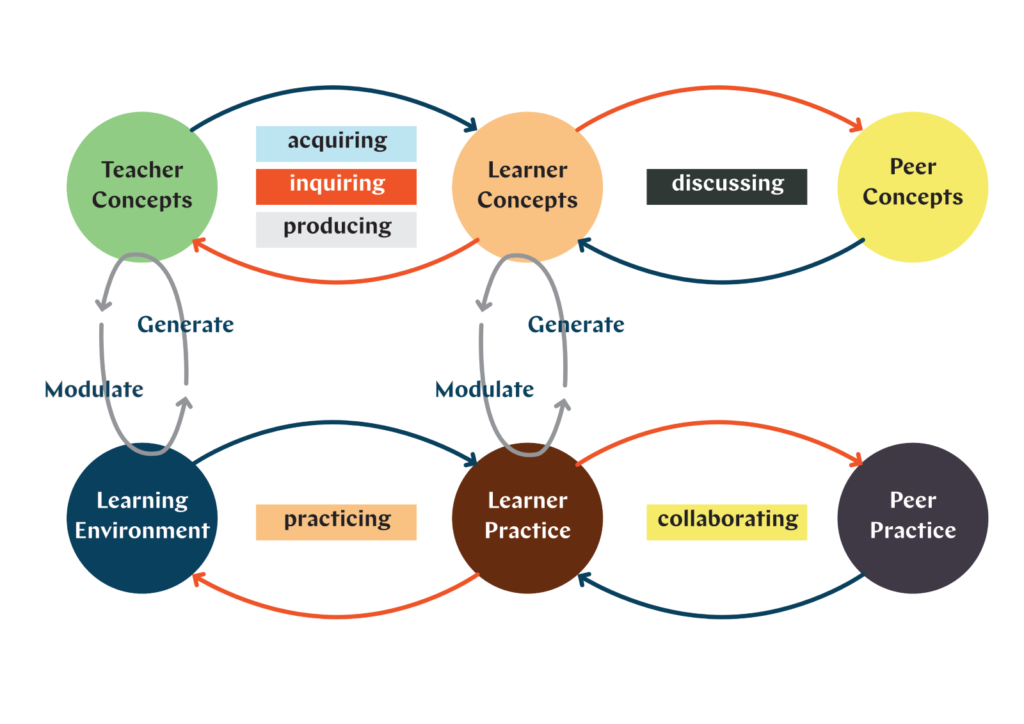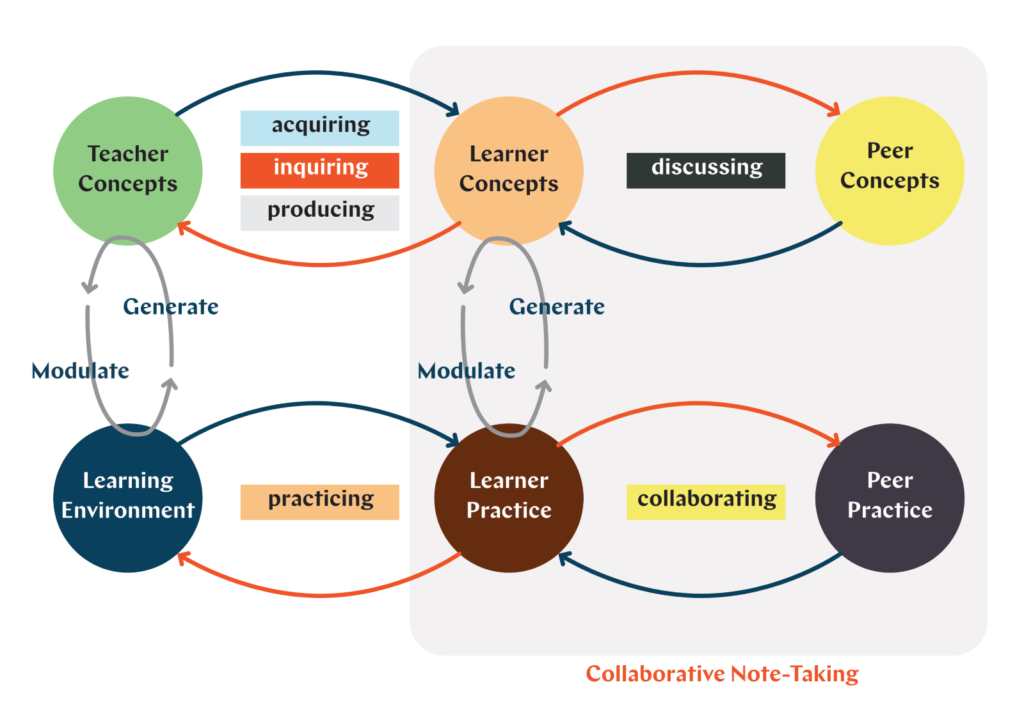Geoffrey Makstutis is Head of the School of Design at West Dean College, one of the University of Sussex’s partner institutions. He holds degrees in architecture from the University of Michigan and the Architectural Association and a postgraduate qualification in teaching and learning for higher education. He was formerly the Course Leader for BA Architecture at Central Saint Martins, University of the Arts London; where he also led several research projects and acted as a PhD Supervisor. He has taught and lectured at institutions around the world and as Subject Lead for Construction, Art, and Design Media; with Pearson Education, he led the development of higher education qualifications across these different subject areas.
Geoffrey is a published author of two books. “Architecture: An Introduction” (2010) and “Design Process in Architecture” (2018). He has also authored numerous articles on architecture, construction, media and education. He is a member of the Royal Institute of British Architects and the Architects Registration Board, a Fellow of the Chartered Association of Building Engineers, a Senior Fellow of the Higher Education Academy and a Fellow of the Royal Society of Arts.
A key experience in the studying of design subjects is the critique or ‘Crit’. Primarily used in formative assessment, this engagement between student and teacher involves the student presenting, typically, work-in-progress and then tutor and student discuss how the work is progressing. This may involve the tutor challenging the student on aspects of the work; with the student seeking to support their position. The tutor may discuss ways in which the student might consider further development. In short, the aim of the Crit is to provide the student with an opportunity to engage in an analytical discourse on their design work and an opportunity to ‘test’ their conceptual and critical approach to their work.
The most important aspect of the Crit is that it is interactive. Where written feedback is often valuable, it is received after the event and is purely one-directional (from tutor to student). While a student may have a follow-up meeting with a tutor to discuss the written feedback, which can be valuable in understanding the feedback, it is further ‘distanced’ from the work and limits how the student can apply the feedback; as they must wait until clarification can be sought. The Crit is live and feedback is continuous throughout the activity. Further, this can also be an activity that engages peers in providing commentary and critique to each other.
However, this does not suggest that a Crit can result in just a discussion. For the student, who may often be nervous about presenting their work, it is easy for key points to be forgotten in the back and forth of discussion. So, there is a need for some record of the discussion. This could be a video or audio recording, but the introduction of such media can often result in people feeling they must ‘perform’ or they become less open in their discussion; stilted in their delivery as they worry that they might say ‘the wrong thing’. Ideally, a written record of the key points of the discussion will be the most effective. Herein lies another challenge. If the tutor is making notes, the flow of their discussion can be disjointed as they seek to write what they are saying. Similarly, if the student is taking notes, they may miss important points raised by the tutor or fail to engage, fully, in the discussion; as they become focused on recording.
We have sought to address these challenges by instigating a collaborative note-taking format during Crits. This sees students working pairs to take notes for each other during their counterpart’s discussion with the tutor.
In practice, this allows the student and the tutor to be actively engaged in a discussion about the work being presented, without needing to stop and take notes. The discussion can flow more freely, without interruption or worry that something may be missed while trying to record points in the discussion. However, there are additional benefits; beyond the initial discussion.
The student pairs are encouraged to meet, after the end of the session, to review notes with each other and discuss. This encourages further peer-to-peer discussion about the work, as each can seek clarification from the other – “what do you think the tutor meant when they said…?” or “You know, the same point was made in your discussion as in mine, let’s look at our work together…” The model also provides multiple points at which students are encouraged to reflect on the feedback they have received, as they receive it, in discussion with their pair, and independently after the discussion. In this way, the collaborative note-taking approach has greater potential for students to engage in a more meaningful and evaluative consideration of the feedback.
In some cases, there may be a need for the tutor to have a record of the feedback, but this can also be based on the collaborative note-taking from the students. Tutors may instruct students to email a copy of the notes, following the peer-to-peer discussion. When these are received, the tutor has the opportunity to either file these as a record of the feedback or, if necessary, send a short email back to the student to further clarify a point in the feedback (that may not have been fully articulated in the notes) – “…don’t forget that we also discussed the possibility that you might look at…” or “…when I mentioned X, this was intended to give you another area for investigation.”
Theory into Practice
This collaborative note-taking practice fits well within pedagogic models, such as Laurillard’s Conversational Framework. In Laurillard’s framework we see how the teacher’s and student’s concepts interact and feed to peer concepts through ‘discussing’. This is what we aim to achieve through the Crit, where a tutor and student explore the student’s work and invite discussion among peers.

Our note-taking model brings the ‘collaborating’ activity, found in Laurillard’s framework, into action and; through the collaborative feedback provides an opportunity for students to explore their own (design) practice with their partner such that they build a sense of peer practice. While this is primarily focused around the sharing of design practice experience, the very nature of the activity also builds a sense of peer practice in feedback and discussion; both of which are key features of professional design studios.

Conclusion
Developing successful teaching and learning strategies is often about finding solutions that are effective for learners and manageable for teachers. While the idea of manageability may seem like a derogation of a teacher’s responsibility to support the learner, there is a difference between things that are ‘easier’ and things that are manageable. When faced with high student numbers and the need to actively engage in the review and discussion of student work, time can be a critical factor. The teaching of design requires careful consideration of a multitude of factors (conceptual development, theory into practice, technical resolution, communication, practical skill), all of which must be explored when discussing a student’s work. In such a context, the ability to engage in discussion, without distractions for the teacher and the student, is profound.
Collaborative note-taking during verbal feedback, in the Crit, provides a manageable and effective means of recording the content of a discussion between student and teacher. In addition, the collaborative nature of the activity creates a context in which students build greater understanding of their own work while supporting colleagues to develop further. In short, it’s win-win for teachers and students.
References
- Laurillard, D. (2002). Rethinking university teaching: a conversational framework for the effective use of learning technologies (2nd ed.). London: RoutledgeFalmer.
- Laurillard, D. (2012). Teaching as a design science: building pedagogical patterns for learning and technology. London: Routledge.


Leave a Reply